According to the legend, of which we doubt, Alvaro Clavijo became a cook (today his top restaurant, El Chato, is number 80 in the 50Best, and 25th in Latin America) only because he was a disaster as a kitchen hand.
This is how it went, more or less: Clavijo – born in 1985 in Bogotá, Colombia - at 17 after finishing school went to work as kitchen hand in a small Tex-Mex place in Paris, as many young Colombians from good families who would leave home for a year to learn a language, grow up, and get to know the world. In that small place in the French capital young Alvaro was a weight: he was too slow as kitchenhand, he really didn’t work. The owner, instead of throwing him out, tested him in the kitchen and taught him something so he could be of help at least there. The outcome: «I fell in love with that place. The sounds, the adrenaline, the heat, the shouts, the service. Everything!».
A few months later Clavijo, was convinced of his future. Instead of returning home as planned he knocked on the door of the famous Escola d’Hosteleria Hofmann in Barcelona, with the intention of learning as much as possible how to delight his guests. This would be the first step of a training that would see him acquire experience again in Paris, but this time at Le Bristol and at L'Atelier de Joël Robuchon, before moving to New York to cook at Per Se and Atera, and finally at Noma in Copenhagen, a classic.
Today
Clavijo is not just the patron-chef of one of the most interesting places in Latin America, the above-mentioned
El Chato in Bogotá, but he’s also the consultant for the new
Mitù, opened in the autumn of 2021 in Milan, serving – of course – Colombian cuisine.
We have visited both restaurants. They were both lovely. "A relaxed yet innovative dinner with one of the brightest chefs in Colombia" says the 50Best of El Chato, and the same thoughts perfectly fit the Milanese younger sibling. They delighted us with simple yet neat dishes, extrovert, rich but without being simply round, full of life, energy. What surprised us the most was the unexpected stylistic fil rouge, a clear connection of intentions and results. In other words, of course there are only few recipes that are the same in both places, after all they are 9’150 km apart. But there’s the same idea and style, a strong mark which is that of Clavijo. Who clearly knows what he's doing.
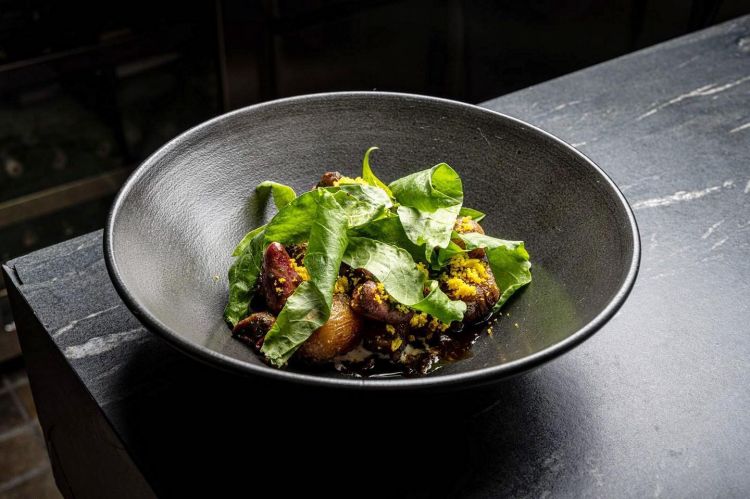
Chicken heart with Richi potato and suero costeño, a dish which we tasted in Bogotá, one of Clavijo’s signature dishes. Excellent, we would like to see it in Milan too
We will return on these tasty aspects, but let’s take one step back now. In 2013
Clavijo was 28 and, after cooking in important brigades around the world, he felt he was ready to return home, to the capital of Colombia, and open a restaurant. Two years later, he found a nice place, in Quinta Camacho (in 2017 he moved to the current location, close to the previous one, in Chapinero Alto). His ideas are confused, however: what should he offer? He makes his attempts, mixes French and Mexican ingredients, Indian and Moroccan. A blend «that didn’t really make sense». In the end, the choice, which was not so banal for Bogotá seven years ago, when in Latin America few people were using local ingredients and showed a new take on local gastronomic roots: using only 100% Colombian products to make an inclusive but brave menu, the result of his international experiences but also capable of enhancing the popular tradition with its almost forgotten food. Today one of his signature dishes at
El Chato is
Heart of chicken with Richi potato and suero costeño (a typical sauce made with whole milk, lemon and salt): delicious entrails.
EL CHATO A BOGOTÀ: I PIATTI
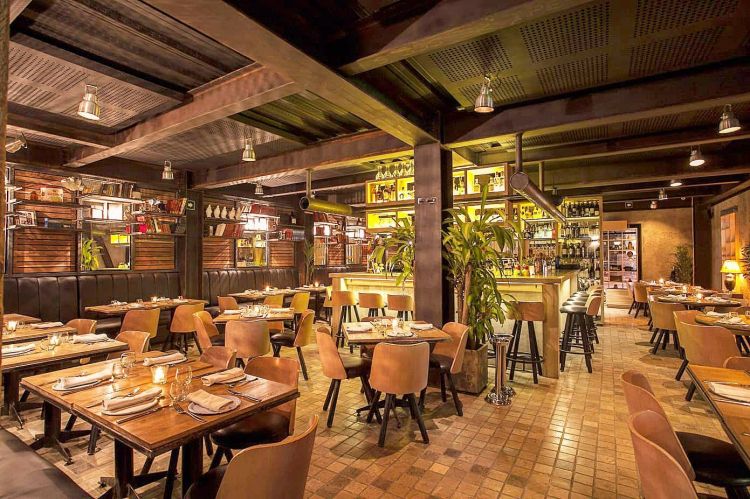
The dining room at El Chato in Bogotà
In Bogotà, of course,
Alvaro Clavijo gave his best.
El Chato is an informal and lively plae, a sort of Colombian take on
Trippa where cocktails are also popular, imagined to be paired with the meal or to attract clients who aren’t necessarily food lovers: sharable dishes, drinks on the table and the fun is guaranteed. We really had great fun, but we also had wonderful food. What? Here are some of our tastings.
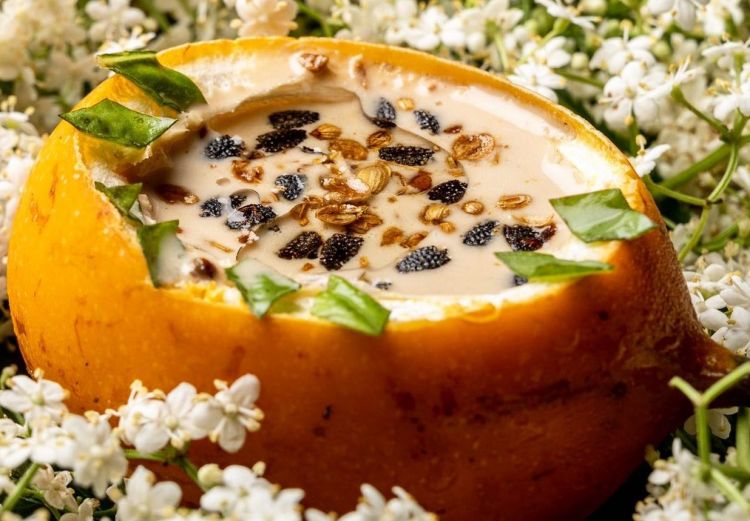
Granadilla, orejero, basil and coriander. Granadilla is the fruit of Passiflora ligularis A.Juss., a plant originally from the Andes; orejero is a paste made with the seeds of Enterolobium cyclocarpum, an evergreen tree that can be found throughout tropical America. As we will see, at Mitù i Milan they have a similar dish
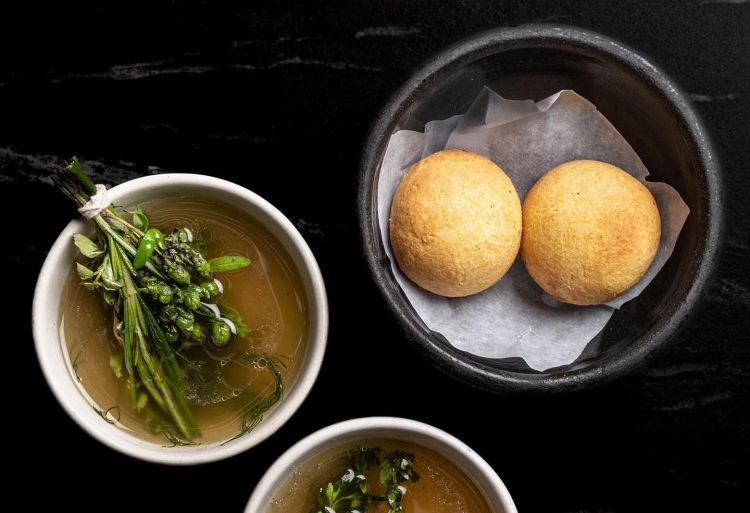
They immediately serve a corroborating broth with almojabanas, typical sandwiches with cuajada cheese and cornflour
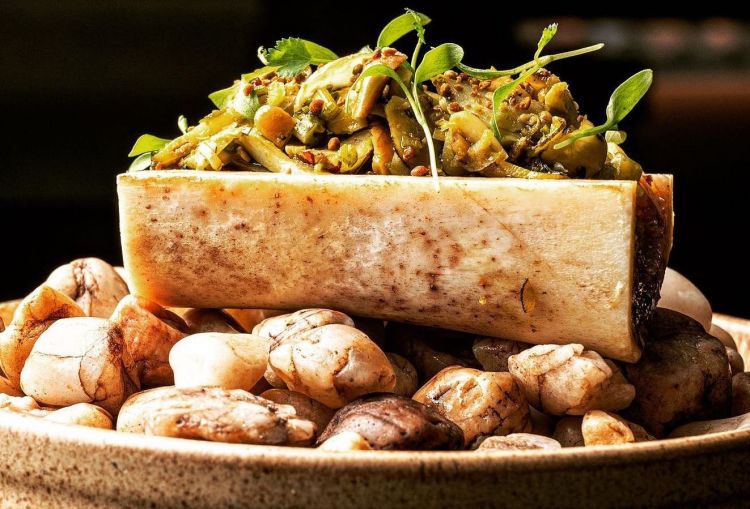
Bone marrow, tucupi and snails. Tucupi is the yellow juice extracted from peeled wild manioca roots, grated and pressed
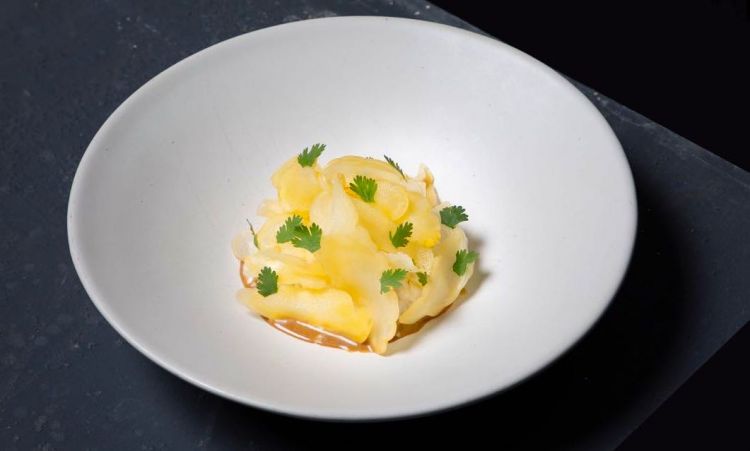
Cubio, crab and rice. Cubio, which botanists call Tropaeolum tuberosum, is an endemic species of the Andes. It’s important in the traditional diet of the Boyacà, in the centre-north of Colombia, as this plant produces tubers used in the regional cuisine. Cubios is similar to carrots in shape, but with a white or yellow peel, and are rich in starch
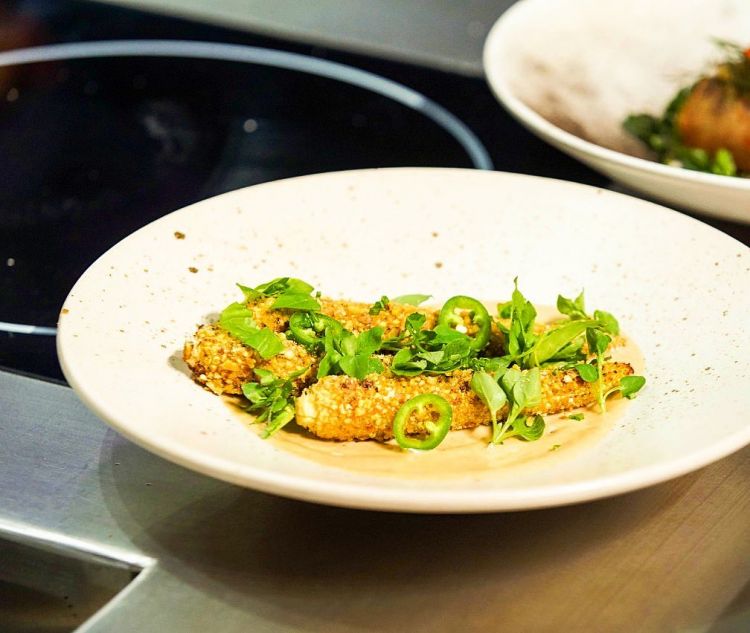
Crunchy corncobs, hazelnut mayo, costeño cheese and toasted corn
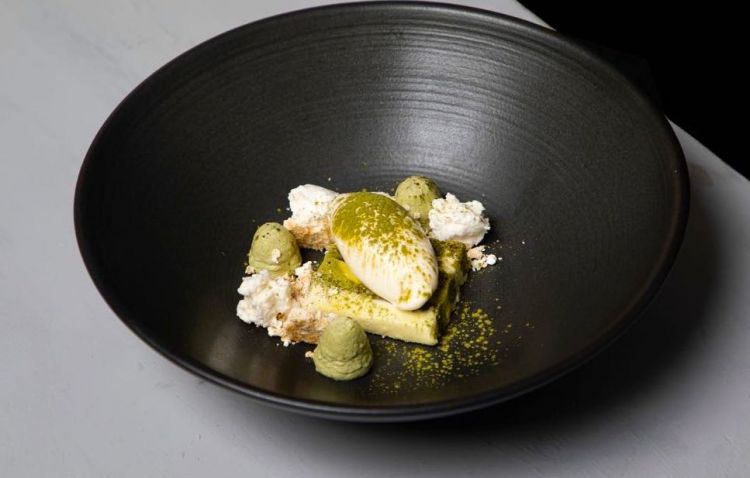
Dessert: Mambe, quinoa and citronella. Mambe, or ypadú, is a non-refined and non concentrated powder made with toasted coca leaves and ash of different plants
MITÙ A MILANO: I PIATTI
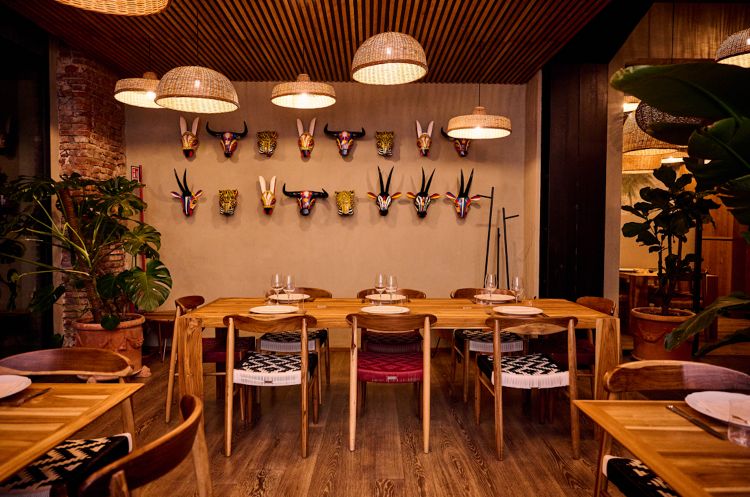
The dining room at Mitù in Milan
There’s an impossible-to-confess (but I’ll confess it anyway) reason that had me happy to discover the cuisine at
Mitù in Milan: one of its business partners is
Iván Ramiro Córdoba, one of the heroes of the Triplete, an icon for Black and Blue football fans. Other than that, I had some initial misconception: how many times, some "distant" cuisines are tamed too much, to second the palate of the Milanese, thus losing their soul... Instead, we found an excellent coherence of style. It’s a fun experience. You experiment new dishes. Taste excellent dishes, thanks also to the resident chef, Spanish (from Sevilla)
Jose Narbona Rodriguez, a nice professional previously with
Juan Mari Arzak in the Basque Country and then in Italy at
Enoteca Pinchiorri. In some cases the offer is totally comparable, especially with fruits and vegetables imported from Colombia, as in the photo right below. One thing, however, needs to be said, it's almost a prayer: please have the
Corazones de pollo con papa Richi y suero costeño land on this side of the Atlantic ocean too!
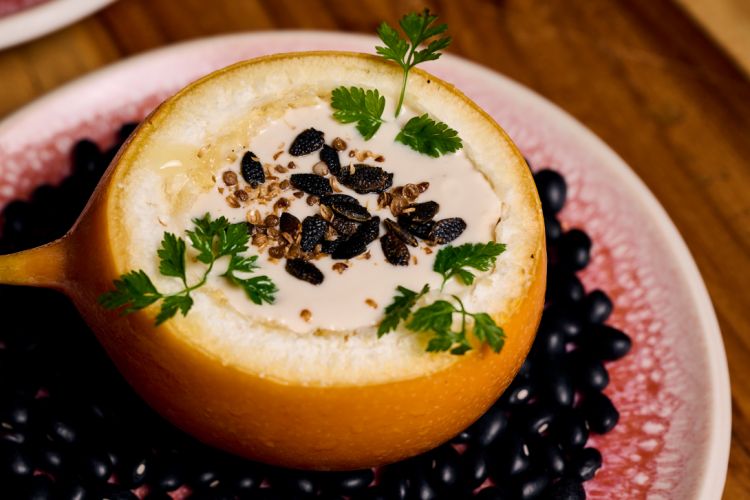
We start like in Bogotà, with Granadilla, leche de tigre and cashew nuts. Taste it, it’s delicious
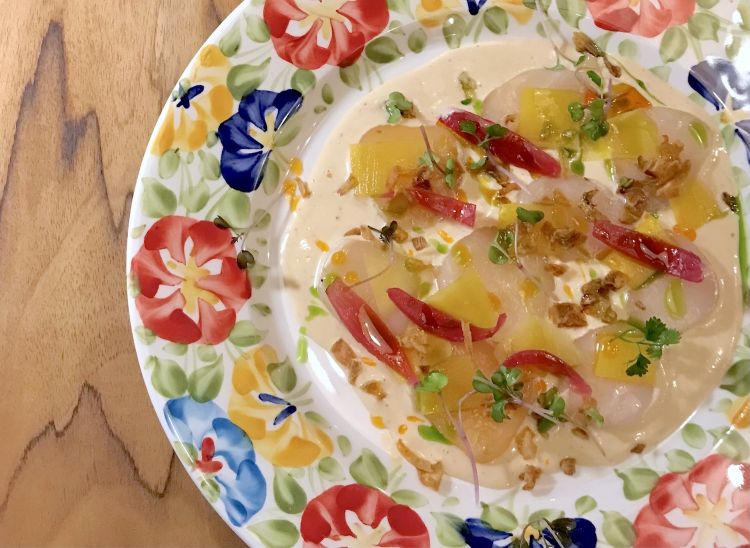
Ceviche of scallop, balanced
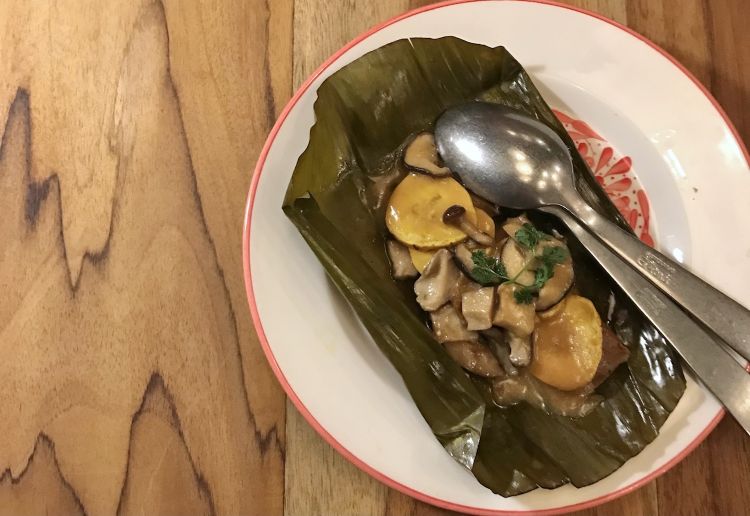
Tamal with plantain maduro and mushrooms. Tamales are a typical dish in some Latin American cultures: rolls made with cornflour dough, filled with meat vegetables etcetera
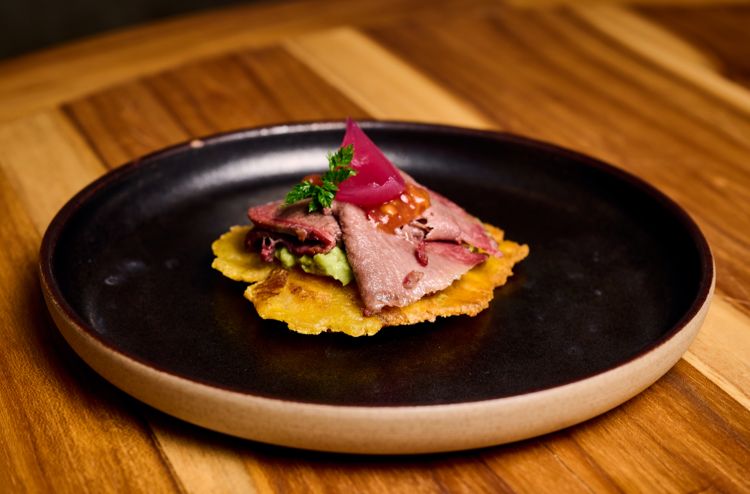
Patacón, salsa guacamole and tongue pastrami. Patacón is a typical dish from Latin America, made with pieces of green plantain, pressed and fried
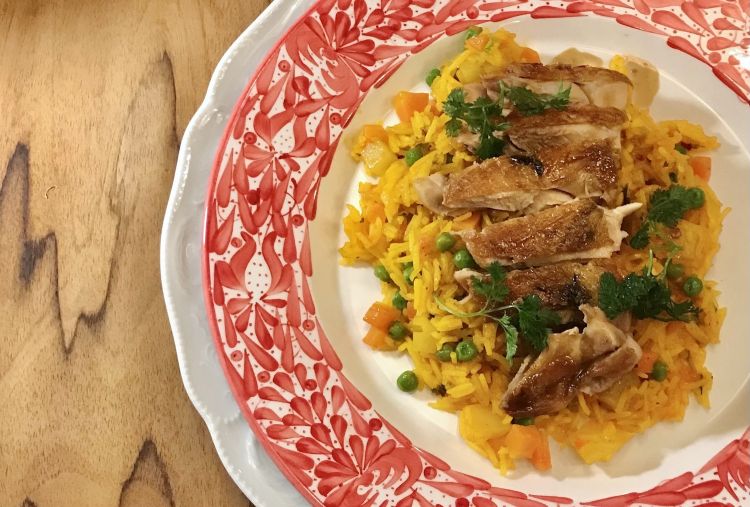
The Arroz chicken atollado is simple and delicious. Arroz atollado is a Colombian dish; on top of rice, it has chicken, pork, potatoes of different kinds, vegetables and seasonings
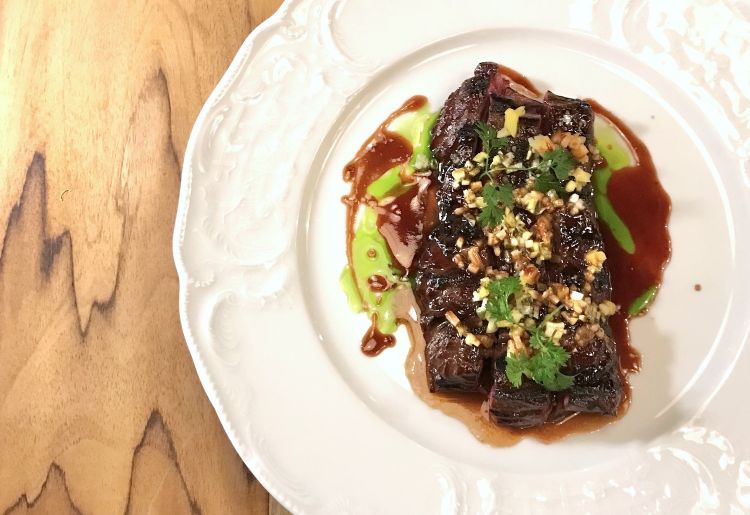
The Entraña, reduction of frijoles, papa criolla and aji of guatila and huacatay (the latter is a herb, Tagetes minuta) is also delicious
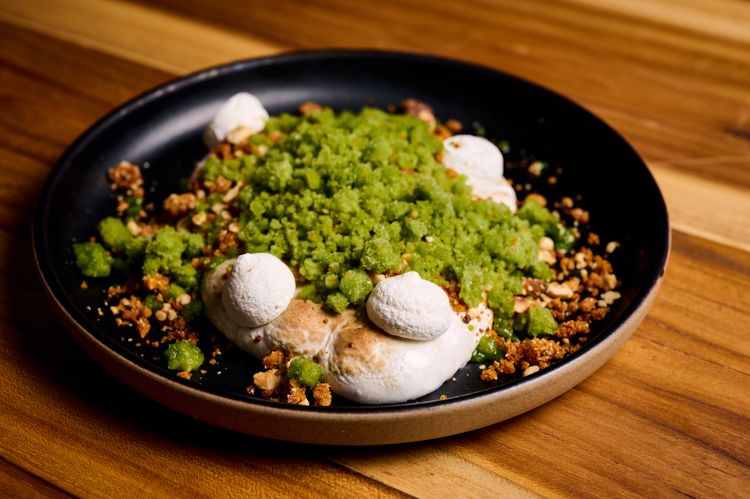
Sweet finale, fresh and convincing with Lulo, guanàbana and meringuqe. Lulo is the fruit of Solanum quitoense, a south American plant of the same family of potatoes, aubergines and tomato; lulo is used by indigenous people in the Andes for its highly vitaminic juice. Guanàbana is the fruit of Annona muricata, an evergreen tree with large leaves
SEE ALSO: Ivan Cordoba now wants to score with a restaurant, from Paolo Marchi
Translated into English by Slawka G. Scarso